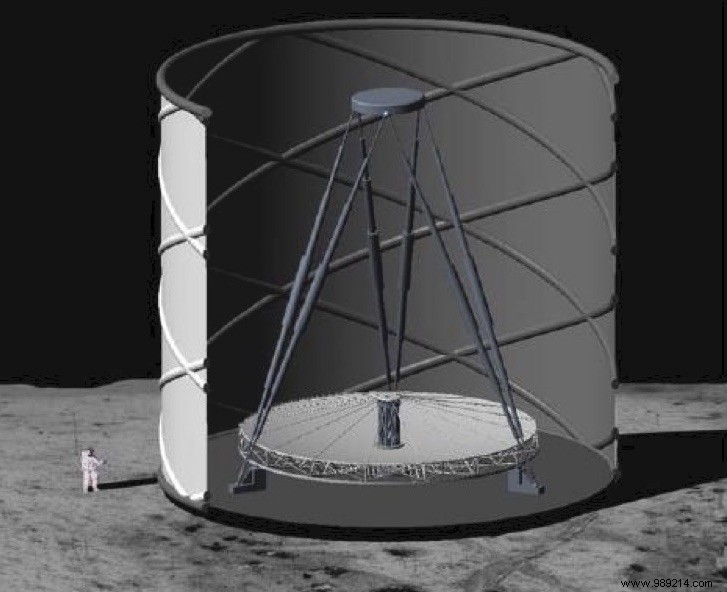A team of astronomers proposes to build a huge liquid mirror telescope directly on the Moon. The goal:to observe the very first stars in the Universe.
Population III stars are the first stars in the Universe, formed a few hundred million years after the Big Bang. At the time, these objects consisted only of the primordial elements, namely hydrogen, helium and lithium. Heavier elements were then forged into the cores of these early stars and their descendants. What did those very first stars look like, and how did they affect the rest of the Universe?
To find out, you still have to be able to find them. Certainly, several large future observatories will be able to scrutinize the Universe like never before. The James Webb Telescope (JWST) is probably the most anticipated. Nevertheless, even this instrument – as powerful as it is – will have great difficulty in locating these first stars, whose glows today are incredibly faint.
To overcome these challenges, a team of astronomers proposes to install a telescope on the Moon. The idea is not new. In fact, it was already proposed in 2008 by a team from the University of Arizona. NASA studied the concept at the time, only to abandon it due to the lack of relevant science related to Population III stars.
That said, an observatory on the Moon would be able to peer into space unhindered by atmospheric effects and terrestrial light pollution. In their study, the researchers propose the design of a liquid mirror telescope , a lighter and more affordable solution in terms of transport than a glass mirror.
Physically imagine a thin layer of about half to 1 mm of mercury placed in a rotating parabolic container. Subjected to a certain skilfully calculated rotation – where the potential energy of gravity and the dynamics of rotation are balanced – the liquid then follows the shape of the surface, and no molecule of the liquid moves relative to any other. Then you get an almost perfect mirror.
Placed at the north or south pole of the Moon, at the bottom of a crater, this mirror should measure at least one hundred meters in diameter , say the researchers. The telescope would also be self-contained, powered by a nearby solar power plant. The data would then be transmitted to a lunar orbiter which would then transmit it to Earth.

This "Ultimate Large Telescope", as the study authors dub it, would then fix its lens on a single patch of sky to absorb as much light as possible. These first stars should then be detectable as "mini-halos". Note that for now, this is only an idea on paper. The authors also admit that lunar dust could be a major obstacle to this type of project.
Finally, let's remember that NASA is not already thinking of transforming a lunar crater into a radio telescope in the Innovative Advanced Concepts (NIAC) program of the American agency. Such an instrument could indeed allow enormous scientific discoveries in the field of cosmology, by collecting data still untapped on the primitive Universe.